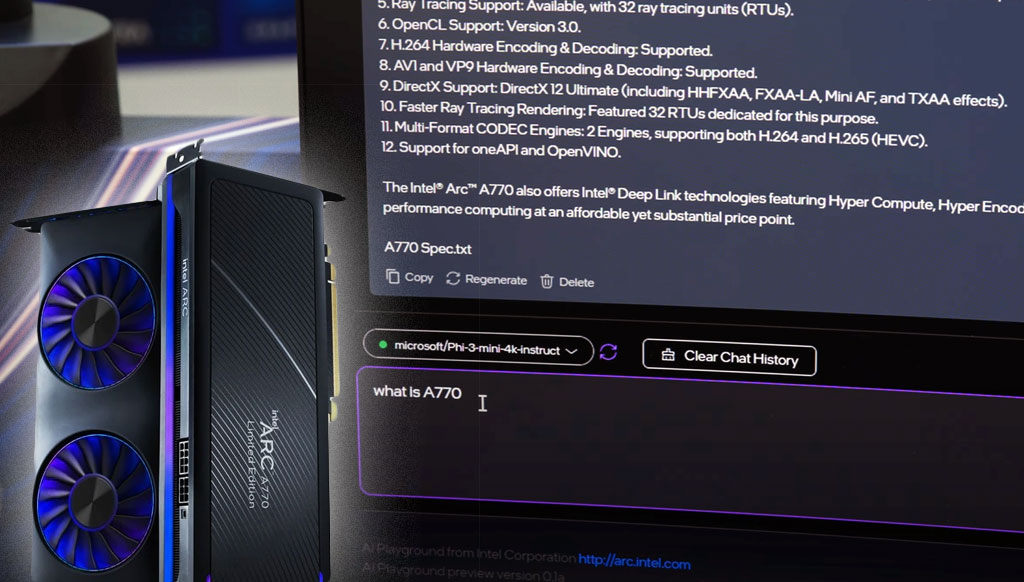Arc GPUs Paired with Open-Source AI Playground Offer Flexible Local AI Setup

In a significant move for the local LLM inference community, Intel has announced that it’s open sourcing AI Playground, its versatile platform for generative AI that was previously exclusive to Intel hardware. This development comes at a critical time as AMD also enhances its generative AI capabilities through collaborations with Tensorstack and Stability.AI.
Arc GPUs
For those of us running quantized LLMs locally, Intel’s Arc lineup – particularly the B580 (12GB) and A770 (16GB) – has already established itself as a compelling option in the price-to-performance equation. Let’s examine how these cards stack up in real-world performance:
| GPU Model | VRAM | Memory Bandwidth | Used Market Price | Qwen2 7B Q8_0 Performance (t/s) |
|---|---|---|---|---|
| Arc B580 | 12GB | 456.0 GB/s | ~$360 | 35.45 ± 0.14 |
| Arc A770 | 16GB | 512.0 GB/s | ~$260 | 30.06 ± 0.03 |
| RTX 3060 | 12GB | 360.0 GB/s | ~$250 | 35.39 ± 0.03 |
What’s particularly interesting here is the A770’s value proposition – offering 16GB of VRAM at a second-hand price point comparable to the RTX 3060, but with substantially higher memory bandwidth (512 GB/s vs 360 GB/s). While the current benchmark shows the 3060 slightly outperforming it on the specific Qwen2 7B test, the additional 4GB of VRAM makes the A770 capable of running larger models or handling higher quantization levels that would simply be impossible on 12GB cards.
AI Playground
Intel’s AI Playground represents a comprehensive solution that extends well beyond basic image generation. Intel describes it as an “AI HUB” with robust support for language models – a critical feature for those of us focused on local LLM inference.
The platform now supports an impressive array of model formats:
- Safetensor PyTorch LLMs: DeepSeek R1 models, Phi3, Qwen2, Mistral
- GGUF LLMs: Llama 3.1, Llama 3.2
- OpenVINO: TinyLlama, Mistral 7B, Phi3 mini, Phi3.5 mini
For the technically inclined builder, this flexibility in model format support is tremendous – particularly the GGUF integration, which has become something of a standard in the local LLM community due to its efficient memory usage and cross-platform compatibility.
IPEX-LLM vs. GGUF
The open-sourced platform gives users choice between two primary implementation paths:
- IPEX-LLM: Intel’s optimized PyTorch implementation, which potentially offers better performance on Intel hardware but with some limitations on model compatibility.
- GGUF: The more universal format that trades some hardware-specific optimizations for broader compatibility and typically smaller memory footprints.
This flexibility means you can tailor your setup based on your specific hardware constraints and model preferences – a crucial consideration when trying to squeeze maximum performance from consumer-grade GPUs.
Intel’s open sourcing of AI Playground represents a significant development for the local LLM community – one that emphasizes value, flexibility, and long-term sustainability. For the price-conscious enthusiast looking to run increasingly sophisticated models locally, this is undoubtedly a step in the right direction.




